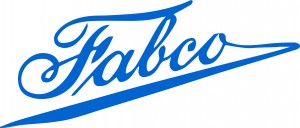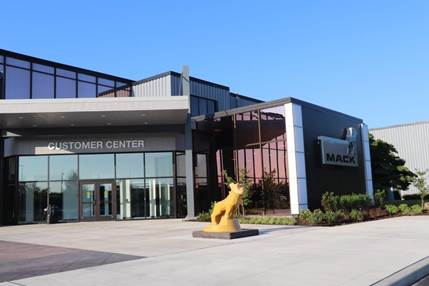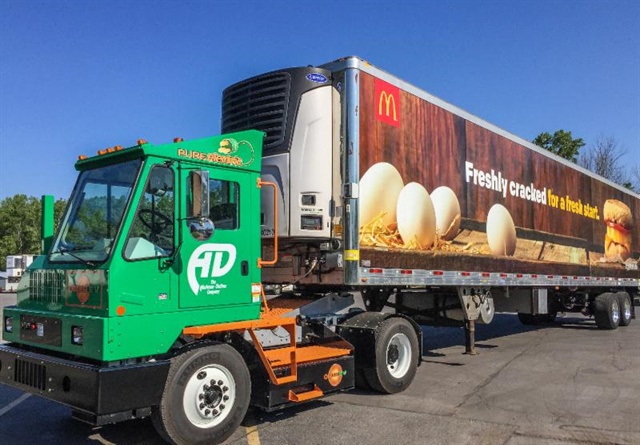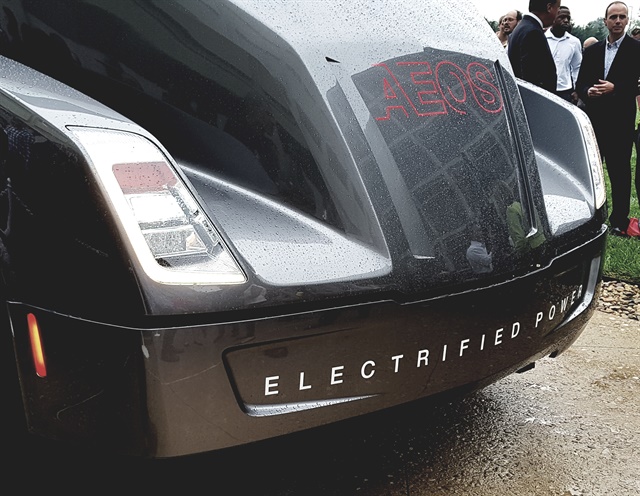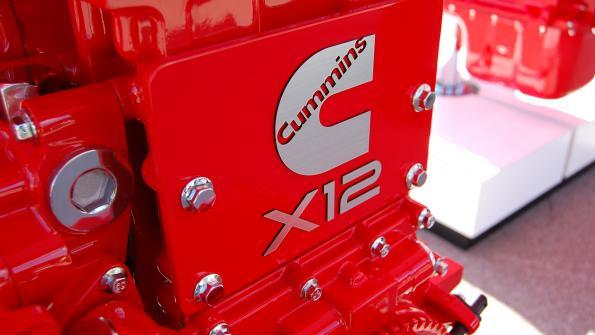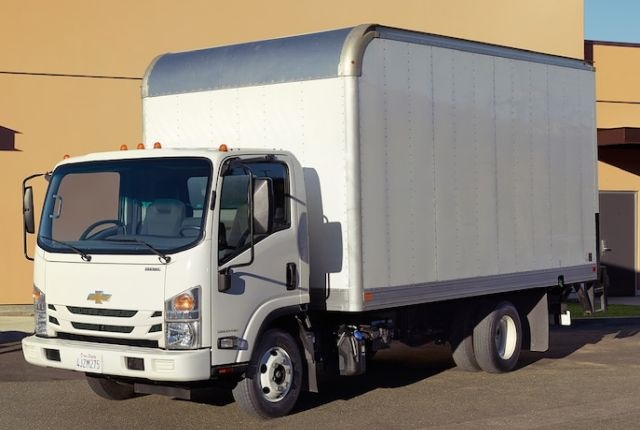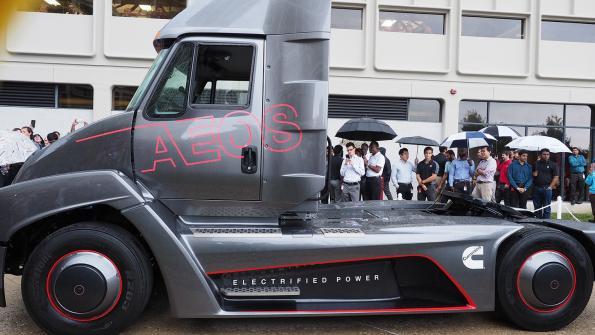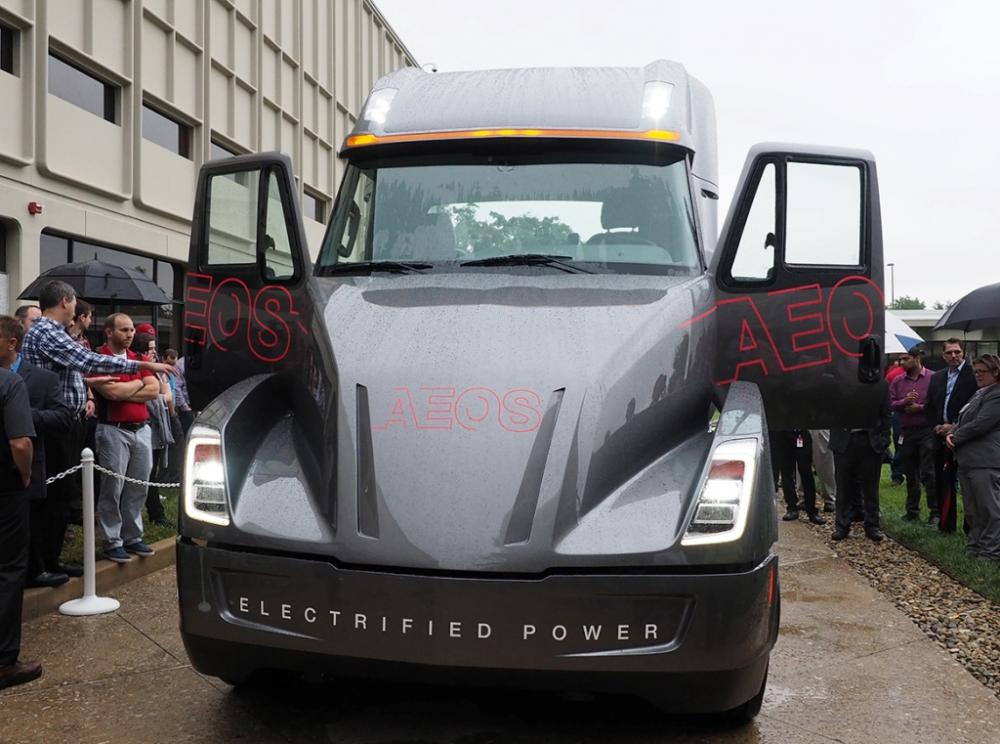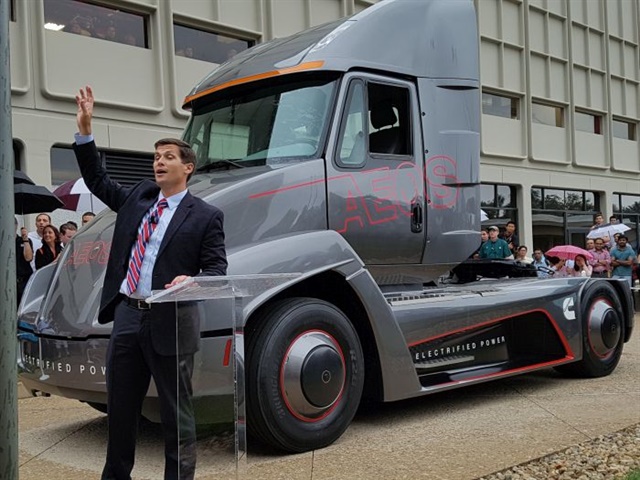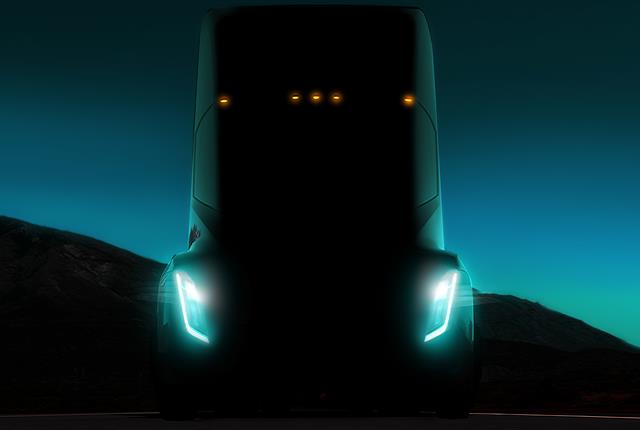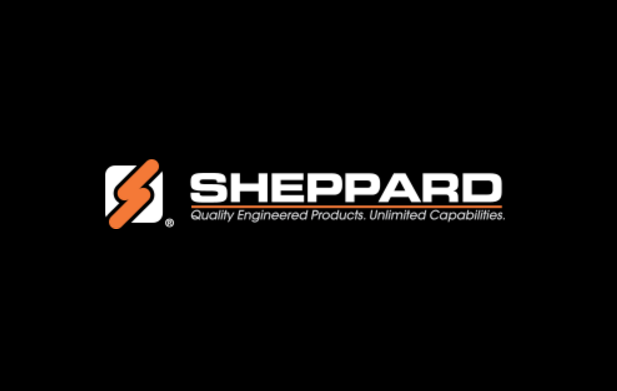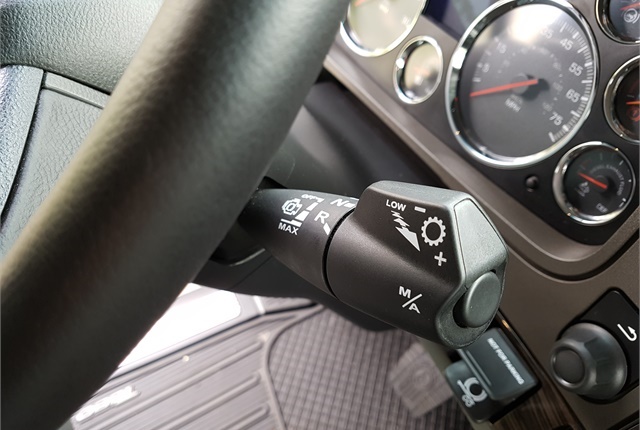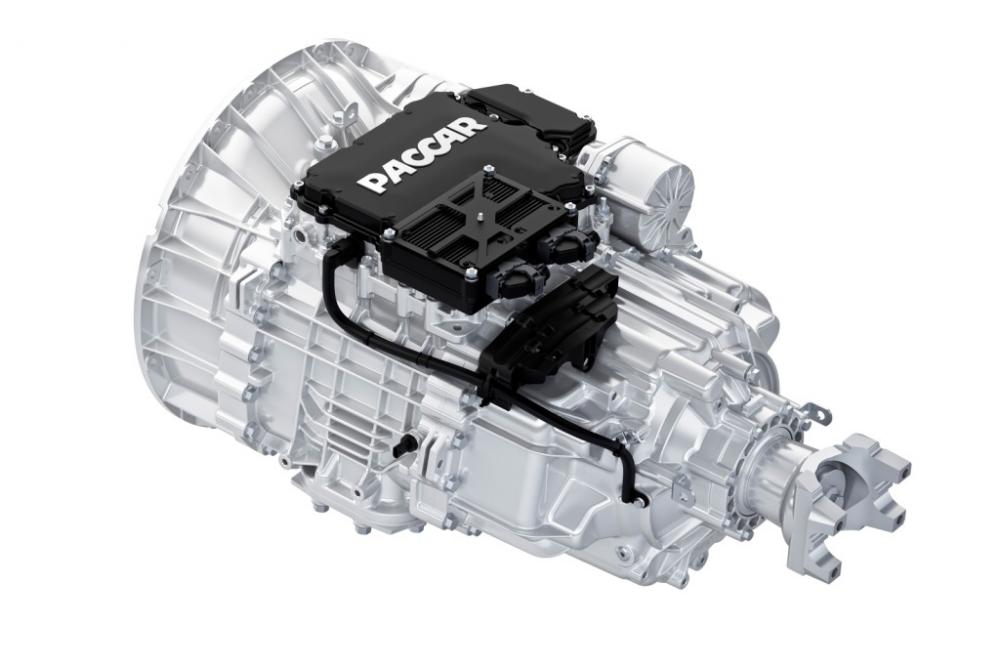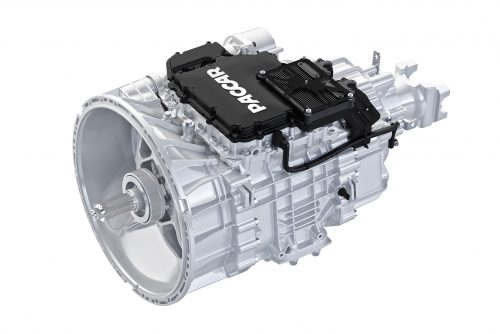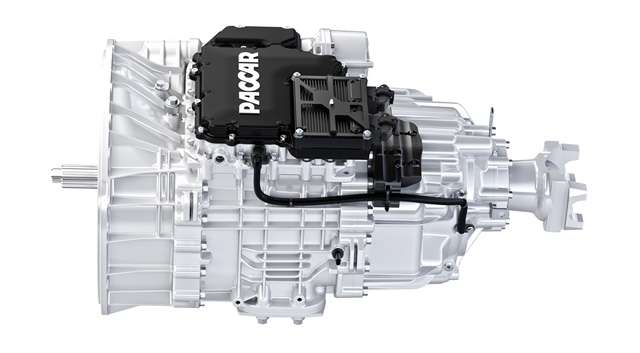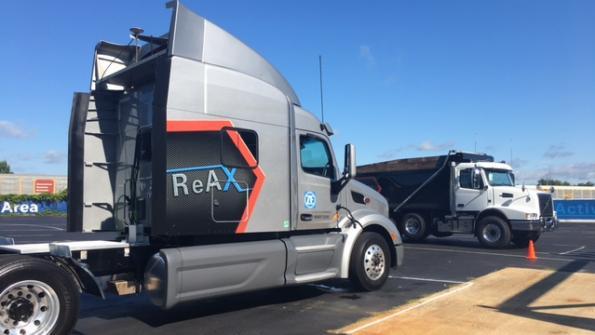
kscarbel2
Moderator-
Posts
18,886 -
Joined
-
Days Won
114
Content Type
Profiles
Forums
Gallery
Events
Blogs
BMT Wiki
Collections
Store
Everything posted by kscarbel2
-
Dodge: 2018 pickups built for commercial upfit needs Fleet Owner / August 31, 2017 CHELSEA, MI. Touting its payload, torque and towing power, Dodge Truck (aka. Ram Truck) today officially unveiled its new heavy-duty and commercial pickup truck lineup for 2018. Back in June, Dodge gave industry journalists a sneak peek at the new models during Fiat Chrysler’s What’s New ride-and-drive event at the Chelsea Proving Grounds. Adrian Ratza, brand manager for Chassis Cabs at Dodge, told Fleet Owner that Dodge’s new commercial pickup trucks were built to handle the versatile upfit needs of vocational fleets and municipal applications. Dodge’s commercial trucks are equipped with backup cameras and safety technologies that Ratza said comply with government standards and regulations. “As a society, we’ve come to expect customizable options,” he explained. “We’ve tried to make it as convenient as possible for the upfitters.” Here are some details of Dodge’s new commercial line: 2500, 3500 heavy-duty pickup For 2018, Dodge continues to offer three-quarter and one-ton pickups with 31,210 lbs. of towing, 7,390 lbs. of payload and 900 lb.-ft. of torque. It also offers more features and improved ride quality with a five-link coil suspension or optional air suspension on Dodge 2500 and a supplemental air bag suspension option on Dodge 3500. New features for 2018 also include: Remote exterior switch in truck bed to activate LED bed lights Backup camera now standard on all models Fleet Telematics Module for vehicle tracking Towing – Up to 31,210 lbs. with Ram 3500 Towing – Up to 17,980 lbs. with Ram 2500 Payload – Up to 7,390 lbs. with Ram 3500 Power – 900 lb.-ft. of torque with 6.7-liter Cummins engine Power – 410 horsepower and 429 lb.-ft. of torque with 6.4-liter HEMI V-8 engine Engine options include: 5.7-liter HEMI V-8 engine delivering 383 horsepower at 5,600 rpm and 400 lb.-ft. of torque, and features variable-valve timing (VVT) 6.4-liter HEMI V-8 delivers 410 horsepower at 5,600 rpm and 429 lb.-ft. of torque at 4,000 rpm, and features VVT with Fuel Saver Technology cylinder deactivation 6.7-liter Cummins High-Output Turbo Diesel produces up to 385 horsepower at 2,800 rpm and 900 lb.-ft. of torque depending on application 3500, 4500 & 5500 Chassis Cab Dodge 3500, 4500 and 5500 Chassis Cab trucks are engineered and designed for extreme daily work and to be upfitter friendly, the company noted. Backup cameras made standard on Dodge 3500 Chassis Cab (10,000 GVWR), and Dodge’s Uconnect 8.4 touchscreen radios now include Google Android Auto and Apple Car Play. In addition, Chassis Cab trucks can be ordered with an optional ParkSense Package, which includes a front park assist system. The new cabs also come with handsfree technology with Bluetooth capability on radios. Engine options include 6.4-liter HEMI V-8 gas engine that powers trucks with 370 horsepower at 4,600 rpm (410 horsepower at 5,600 rpm under 10,000-lb. GVWR) and 429 lb.-ft. of torque at 4,000 rpm, and features variable-valve timing (VVT) and Fuel Saver Technology cylinder deactivation. In addition, a 6.7-liter Cummins diesel engine is available with high-output option producing 325 horsepower at 2,400 rpm and 750 lb.-ft. of torque at 1,500 rpm. Other features include: Electronic stability control on all models Dual fuel tank capacity of 74 gallons (52-gallon tank plus 22-gallon tank) 15,000-mile oil change intervals on Cummins diesel Dual alternator systems up to 440 amps Fit-to-use backup camera and front/rear parking sensors In an effort to make its new lineup more "upfitter friendly," Dodge said it ensured: Industry standard frame lengths of 60, 84, 108 and 120 inches No components or lines above the rear frame rails Through-the-frame plumbing and electrical Diesel exhaust fluid tank (DEF) refill port located at the rear of the cab on the driver’s side Photo gallery - http://fleetowner.com/hd-pickup-van/ram-2018-pickups-built-commercial-upfit-needs#slide-0-field_images-225561
-
Heavy Duty Trucking / September 5, 2017 Meritor has acquired the product portfolio and related technologies of Fabco Holdings and its subsidiaries under undisclosed terms. Fabco’s suite of products will expand Meritor’s portfolio of complementary products, including transfer cases, specialty gear boxes, auxiliary transmissions and power take off units for medium-, heavy- and extra-heavy vehicles and for on- and off-highway, construction, defense, rail, and other industrial applications. These products are available to both original equipment and aftermarket customers. In addition to expanding Meritor’s global ability to offer complementary products, the acquisitiion will also help the company diversify its customer base and expand into the rail, oil, and gas industries not currently served by Meritor. "Acquiring this suite of products and technologies provides Meritor with new products and customers in important markets that we expect will contribute to significant growth in our specialty, defense and off-highway business units," said Jay Craig, CEO and president. "This transaction fits well with our plan to pursue strategic growth initiatives while maintaining a balanced approach to capital allocation as part of our M2019 plan." .
-
Volvo gives Mack Truck Customer Center a facelift
kscarbel2 replied to kscarbel2's topic in Trucking News
Volvo opens newly remodeled Mack customer center Fleet Owner / August 31, 2017 Mack Trucks recently celebrated the opening of its remodeled Mack Customer Center based in Allentown, PA. The $3 million renovation features facility enhancements, a reconfiguration of the floor plan and the addition of multiple interactive displays, Mack noted. “We’re pleased to celebrate the investment into our new Mack Trucks Customer Center, and we look forward to customers from all over the world visiting this location to learn more about Mack products, services and support,” said Jonathan Randall, senior vice president of sales, Mack Trucks North America. Within the Mack Customer Center, Mack houses a product showroom, the 360-degree Bulldog Theater, office and meeting space, and the Mack Shop. A test track is located around the facility for customers to test drive Mack models. The redesign work was initiated in April 2016. Key partners on the project include Alliance Engineering, Mohawk Construction, Blue Rock Construction and RES Exhibits. As part of the renovation, Mack noted it also supported the transformation of the Mack Trucks Historical Museum located within the facility. “Mack has been around a long time, but we’ve never lost our passion or focus on the customer,” Randall said. “The Mack Customer Center spotlights our commitment to developing products and services driving the success of our customers’ businesses.” -
Truck News / August 29, 2017 ALLENTOWN, Penn. – Mack Trucks opened its new, remodeled Mack Customer Center in Allentown, Penns. today. The new renovation cost Mack $3 million and includes facility enhancements, a reconfiguration of the floor plan and the addition of multiple interactive displays to offer a more engaging experience for Mack customers. “We’re pleased to celebrate the investment into our new Mack Trucks Customer Center today, and we look forward to customers from all over the world visiting this location to learn more about Mack products, services and support,” said Jonathan Randall, senior vic- president of sales, Mack Trucks North America. The new customer center also features a product showroom, the 360-degree Bulldog Theater, office and meeting space, and the Mack Shop. A test track is located around the facility for customers to test drive Mack models. The redesign work was initiated in April 2016. Key partners on the project include Alliance Engineering, Mohawk Construction, Blue Rock Construction and RES Exhibits. In addition to the interactive displays added throughout the 160,000 square-foot-facility, highlighting the brand’s products and uptime services, a “selfie” station is included so visitors can take and immediately share on social a photo with a Mack truck. As part of the renovation, Mack also supported the transformation of the Mack Trucks Historical Museum located within the facility, reorganizing the space to be more visitor-friendly. A new recognition wall at the entrance to the museum acknowledges dealers and others who donate to the Museum. “Mack has been around a long time, but we’ve never lost our passion or focus on the customer,” Randall said. “The Mack Customer Center spotlights our commitment to developing products and services driving the success of our customers’ businesses.” .
-
Cummins readies next-gen, future commercial power
kscarbel2 replied to kscarbel2's topic in Trucking News
Closer look: An electric-power truck from a global diesel leader Aaron Marsh, Fleet Owner / August 30, 2017 Though a sudden downpour tangled its "sneak peek" unveiling a bit, it couldn't dampen onlookers' enthusiasm for the AEOS all-electric Class 7 truck Cummins, Inc. showed off Tuesday at its Technical Center in Columbus, IN. When Cummins — a company that has built its global core business and reputation on diesel power — sets its sights on electric powertrains, people sit up and take notice. But with the growing momentum around the potential for electric commercial vehicles, what's the likelihood that this alternative power could make real inroads in North American trucking, where diesel is the undisputed king of over-the-road? Julie Furber, executive director of Cummins' Electrification Business Development Initiative, noted the company has been testing out prototype electric and range-extended electric vehicles over the last decade. She conceded that electric power is likely to appear in other commercial vehicles before long-haul trucks. Even so, the company believes there are applications for commercial electric powertrains that make sense today. "We see transit bus, we see underground mining, we see material handling and some other markets, and then it'll move into perhaps some municipal vehicles and school buses and things like that," she told Fleet Owner. "I think trucking will be a bit later. There are some things that have to advance for electric power in trucking to make sense," she added. Those include cost-effectiveness, where the cost of electric powertrain components needs to continue to drop, "which it is," Furber noted. And power density also needs to improve so that battery size and weight necessary to power something like a heavy duty truck is more compatible with trucking needs. Still, "I think what you'll see is that fleets will have a mixed bag of powertrains in the end, where some of their missions which are more sensitive in terms of things like emissions [restricted] zones will be fully electric," Furber said. For other duty cycles or where range needs are greater, Cummins anticipates that electric powertrains will be range-extended — perhaps with downsized diesel engines to generate power when batteries are depleted — or will incorporate hybridized configurations. The reality for North American trucking, though, is that "you'll still have long-haul trucks for many years to come that will be diesel-powered," Furber said. Photo gallery - http://fleetowner.com/emissions/closer-look-electric-power-truck-global-diesel-leader#slide-0-field_images-225501 -
Electric Yard Truck Deployed to McDonald's Distribution Network Heavy Duty Trucking / August 31, 2017 Orange EV and The Anderson DuBose Company are deploying an all-electric Class 8 yard truck in the McDonald’s distribution network. The Orange EV T-Series electric yard truck replaced a diesel model at The Anderson DuBose Company’s Rochester, New York, distribution center, where it manages and moves dispatch trailers. The truck is seen as an important step in the sustainability efforts of Anderson DuBose and McDonald’s. Switching to an all-electric yard truck will significantly reduce the company's carbon footprint while also supporting the company’s customer commitment to sustainability. Each year, Anderson DuBose sets aggressive sustainability targets to reduce electricity consumption, diesel fuel usage, and waste-to-landfill. Anderson DuBose said drivers report that the new truck is smooth, quiet, cool and clean in addition to being environmentally friendly. “I’ve heard nothing but great comments from the drivers," said Tom Hank, general manager of the Anderson DuBose Rochester facility. "Orange EV’s truck is more comfortable and our operators really like the quiet and smooth operation. Management is pleased that we can provide a safer and healthier working environment – the truck has no engine and no emissions." The Anderson DuBose Company is a distribution company based in Lordstown, Ohio, and it works closely with the other members of the North American Logistics Council to identify and share best practices. "Being the first to identify the Orange EV truck and work through the steps to on-board the vehicle enables us to be a resource for the other distributors," said Hank. "They can visit, observe truck operations, understand our design and business case, and hopefully deploy more trucks throughout the country." .
-
Cummins readies next-gen, future commercial power
kscarbel2 replied to kscarbel2's topic in Trucking News
Cummins Taking Long View on Alternative Power Heavy Duty Trucking / August 30, 2017 COLUMBUS, IND. — For 98 years, Cummins has been powering trucks and buses around the globe, and the company said on Aug. 29 that it has every intention of being in that same position 98 years from now. Cummins executives stressed that they will continue to deliver the right powertrain for any marketplace anytime in the future, regardless of the energy source. "Energy diversity is the key to the future, and a one-size-fits-all approach is no longer viable," said Jennifer Rumsey, vice president and chief technical officer. "At this point in time, we believe there is a place for a wide range of technologies from diesel and natural gas to electric. "These technologies will evolve in the coming years," she continued, "and Cummins is capable and ready for this range of power technologies to meet our customers' needs today and in the future." The message was clear; anyone who believes Cummins' best days are behind it had better think again. These are certainly good times for the engine maker, currently holding a 37% market share in the heavy-duty engine space where a heavy presence of captive engines can leave the independent engine maker at a pricing disadvantage. Brett Merritt, executive director, EBU On-Highway Business, said the company commands nearly 80% of the North American medium-duty market and more than 90% of the school and transit bus markets. "Cummins is a technology company, first and foremost," he said. "Whether you're talking about diesel combustion, emissions catalysis or controls integration, we have the technical expertise combined with market knowledge to deliver technical innovations in the future." And to that end, the company is investing $700 million annually in research and development to stay on the leading edge of emerging technologies -- some of which involves marrying proven diesel technology with battery and electric technologies that meet regulatory requirements, societal demands, and customers' needs. Cummins is quite confident that diesel engines will be powering heavy trucks for many years to come, especially in the long-haul sector. "Twenty years from now, we will still be using internal combustion engines running on conventional fuels or unconventional fuels," said Srikanth Padmanabhan, president of Cummins' Engine Business, noting that they may not be the engines that we are familiar with today. "By that time, all ICE will have some form of mild hybridization and/or accessory drives, but ICE will continue to be an important player in global transportation." Padmanabhan said that whichever technologies may emerge in the next 15 to 20 years. it will be Cummins' responsibility to make sure customers get the right technology, not just a new technology for technology's sake,but something reliable and efficient that meets both the customers' and society's needs. Energy Diversity While electrification has seen very heavy exposure in the mainstream press in the past couple of years, Padmanabhan said Cummins has been working on this for over two decades. "Electrification makes sense in some areas, but not all," he said. "We know from real data and real-life experience where it works, where it makes sense and why we should use it." Cummins seems well placed to explore the potential for electrification because of its previous experience in power generation as well as engine design and development. Batteries supplemented with some form of high-efficiency, low-emission ICE seem best able to bridge the gap between 100-mile local trucks and 300-mile regional trucks. The company is now developing a high-efficiency spark-ignited engine that it says can deliver diesel-like performance and durability across a range of liquid fuels, like ethanol, methanol, and gasoline, while meeting the most stringent emissions requirements. Natural gas and diesel both figure prominently in this research. Engineers and scientists are also investigating the viability of alternatives like bio-fuels, synthetic fuels, and hydrogen. And, with its partners, Cummins is looking at projects focused on Proton Exchange Membrane and Solid Oxide Fuel Cell technologies. "Cummins is partnering with a few different fuel cell providers to develop that technology," said Rumsey. "We have been working for a number of years on those technologies." Diesel Still Has a Future Next spring, Cummins will introduce the 12-liter X12 engine, which will boast the highest power-to-weight ratio in the industry. It's targeted at vocational, regional and weight-sensitive bulk-haul applications. It’s 600lbs lighter than the closest 13L engine and 150 lbs lighter than the closest 11L engine. The X12 is derived from the ISG first introduced in 2013 as a global engine platform. It made its first appearance a year later in a joint venture with the world’s largest independent engine maker, Beiqi Foton Motor Co. Ltd. of China. Foton now uses the ISG diesel in a new truck series developed with Daimler. Cummins said the engine in ISG trim already has more than a billion miles under its belt and is ready to take on North America. While on a tour of the technical center, reporters were shown, but were not allowed to photograph, the next generation X15 engine, slated to launch in 2022. Cummins said it will be capable of meeting 2027 GHG rules five years ahead of the legislated requirement --and without using the feared waste heat recovery system. This 15 L engine will be 300 lbs lighter than the current X15, with the height of a 13 L engine, ensuring efficient installations in future ultra-aero trucks, both conventional and cabover. And natural gas remains a viable alternative to diesel, in a way similar to electric vehicles. It's still best suited to shorter ranges and a return-to-base operationwith a fuel supply. Range is limited by the size of the fuel tanks, but it does work in many instances, and it can be used to power range-extended battery electric vehicles. Cummins revealed its latest Near Zero natural gas engines during the media event in Columbus. According to Cummins, end users will find the Near Zero natural gas engines are an equivalent performance option to diesel and, like the latest clean-diesels, these produce little to no emissions. Cummins said it managed a 90% reduction in NOx, getting output down to just 0.02 gm/bhp/hr. A growing crowd of observers seems ready to pronounce diesel engines a marooned technology while electric systems seem poised to emerge as the power technology of choices. Cummins, however, would beg to differ. Padmanabhan sees diesel as a safe bet for at least the next 20 years, and likely far beyond that. It's simply has no equal in terms of energy density, portability, and flexibility. Used as a range extender with battery electric systems, diesels can be made to run at near-zero emissions levels because they operate at a steady state, with zero transient cycles to worry about. Diesels will emerge with varying degrees of hybridization and with various off-engine accessory drives that help to minimize parasitic losses. And trucks as a whole will become more efficient, which will require less power to run at highway speeds, so smaller displacement engines could well find a home in heavy-duty long-haul applications, with much improved fuel efficiency. "We succeeded during previous major disruption periods because Cummins is a technology company that embraces change, and capitalizes on that change with the right technology that matters in the marketplace and to our customers," said Padmanabhan. He doesn't see that changing anytime soon. . -
Aaron Marsh, Fleet Owner / August 30, 2017 COLUMBUS, IN. With about 42,000 of Cummins, Inc.'s latest big-bore X15 Series diesel engines produced since their launch in January, the company unveiled the 15L platform's next evolution slated for availability in 2022 and showcased a range of energy-diverse products, including a fully electric, plug-in Class 7 truck. The press event at Cummins Technical Center here in Columbus, the company's global headquarters, explored how the engine maker is positioning itself to be the supplier of choice across the spectrum of diesel, alternative and emerging engine and powertrain technologies for commercial vehicles. "We're ready to support the changes shaped by the regulatory environment and global concern for air quality and the need for a low-carbon future," said Jennifer Rumsey, vice president and chief technology officer at Cummins. That includes heavy duty diesel engines the company said will meet tightening emissions and efficiency requirements going forward. With the 2017 X15 weighing in at 2,950 lbs., the next iteration of the engine is going to shave off some 300 lbs. from that and has essentially been designed to fit into a 13L engine's "shell," engineers explained. Reporters got a glimpse of the new engine in prototype form. The goal is to deliver a 15L for 2022 that's capable of the same levels of horsepower, torque and durability but will weigh less and have a smaller footprint to allow for advanced fuel systems, emissions and after-treatment technology and placement — as well as being able to fit in new aerodynamic truck designs. The upcoming Cummins X12 12L diesel, geared toward regional haul and weight-sensitive vocational trucking applications, will arrive in March 2018. It'll be available with ratings of 350-475 hp/ 1,250-1,700 lbs.-ft. of torque but weighs only about 2,050 lbs., which Cummins engineers said is roughly 600 lbs. lighter than the nearest 13L competitor and 150 lbs. lighter than even the nearest 11L competitor. The coming X12 and current and next-gen X15 engines utilize Cummins compact Single Module Aftertreatment product. They also share parts such as oil filters and turbos to help reduce costs for fleets with a mix of vehicles and configurations. Brett Merritt, executive director for on-highway business at Cummins, stressed the company's technical expertise and highlighted its wide product portfolio, noting the company is investing $700 million annually around the world in research and development. "We have the largest on-highway product offering in the globe. From 2.8L to 15L, from natural gas to diesel, we offer a wide array of solutions for our customers," he said. According to Merritt, Cummins' 2017 engine lineup has helped it reach an 80% share of the medium-duty North American commercial truck market, largely thanks to the B6.7 and L9 engines. "Whether the application be RV, package van, fire truck or bus, people in the market are choosing Cummins," Merritt said. "This suite of engines has become near-ubiquitous in the bus market, both transit and school, where we've reached over 90% share." Meanwhile, Cummins claims more than 37% market share in powering North American Class 8 trucks, a market to which the company remains "absolutely committed," he added. Alternatives and advancements Although Cummins believes diesel will remain the power source of choice for North American trucking for decades to come, the company is continuing to develop and invest in alternative fuel engines and technologies. It will also offer integrated powertrain solutions through its recently formed Eaton Cummins Automated Transmission Technologies joint venture. Stealing the show at the press event Tuesday was Cummins' "sneak peek" at the AEOS, a fully electric Class 7 demonstration truck with a max GVWR of 75,000 lbs. and a range of 100 miles per charge, which is extendable to 300 miles with additional battery modules. The truck features a Cummins Integrated Electrified Powertrain ahead of the company's 2019 target for market availability of such an electric option. Cummins also showcased its development of a high-efficiency spark-ignited technology "that can deliver diesel-like performance and durability" across a range of liquid fuels from ethanol to methanol and gasoline and can meet "the most stringent emissions requirements." At the Columbus technical facility, Cummins operates 88 test cells running diesel, natural gas, gasoline, ethanol, hydrogen, propane and biodiesel engines and has also invested in and continues to explore fuel cell power. Rob Neitzke, president of the Cummins Westport Inc. joint venture producing natural gas engines, pointed out that the latest Near-Zero 2018 powerplants — the B6.7N, L9N and ISX12N — are certified to the California Air Resources Board's NOx emission standards that are 90% lower than those of the U.S. Environmental Protection Agency. He stressed the maturity of CNG technology as a fiscally viable option for the right markets and stability of natural gas prices, noting that fleets can purchase 3-4 year futures of the fuel. Connectivity The array of fuel and engine/powertrain options comes together with Cummins application of connectivity and data analytics. To that effect, Cummins formed a new internal organization in May led by Sherry Aaholm, chief information officer at Cummins, called the Digital Accelerator. It's meant to streamline innovation and bring concepts from idea to commercialization faster and complements Cummins' Connectivity Solutions division formed 15 years ago. Srikanth Padmanabhan, president of engine business at Cummins, explained that the point of the company's energy diversification in terms of commercial powertrains is to capitalize on disruptions globally while offering power solutions custom-tailored for individual markets and customers. "We will be the powertrain provider of choice for our customers, regardless of what the powertrain choice is in the on- and off-highway world," he contended. "Connectivity and electrification as disruptions are here — and we will capitalize on those disruptions much as we have with the other disruptions over the last few decades." Further, "we've succeeded in disruption because Cummins is a technology company that embraces change and capitalizes on that change with the right technology that matters for the marketplace and our customers," Padmanabhan said. Whatever the fuel for commercial vehicles, Cummins sees a unifying factor in data and computer control. That will allow the company to send over-the-air updates to reconfigure powertrains based on customers' particular needs, for example, while bringing maintenance to the prognostic and proactive. "We are able to start to see patterns that emerge, and out of those patterns we able to take care of reactive solutions for our customers in a shorter and shorter time frame," Padmanabhan noted. "But more importantly, we are thinking about them in a prognostic way and a proactive way and can help our customers fix the problems that they should never have in the first place." Going forward, Cummins sees a mix of internal combustion engines using a variety of fuels that will be necessary in the decades to come to meet commercial vehicle needs. But there will also be a variety of electric power based on geography, range/duty cycle and regulatory requirements, Padmanabhan contended, including fully electric, range-extended electric and hybrid electric configurations. And Cummins is hoping its global reach and established relationships will give it an edge in providing that range of power and powertrain options. "We're the people that understand the industry, that know the marketplace and know the customer applications," he said. "Whatever is going to come in the next 15 years, we will do the right thing in terms of making sure that the right technology for our customers matters, not just technology for the sake of technology." .
-
Heavy Duty Trucking / August 30, 2017 General Motors has begun offering a standard five-year or 100,000-mile warranty with its gasoline-powered Chevrolet Low Cab Forward trucks to qualified fleet customers, which would make it the only cab-over-engine manufacturer to offer these terms without an extended warranty. GM began offering the warranty terms with its 2016-model-year Low Cab Forward 3500 and 4500, powered by a GM-sourced 6.0L V-8 Vortec gasoline engine that delivers up to 297 horsepower and 372 lb.-ft. of torque through a 6-speed GM transmission. The trucks are available in regular and crew cab models. A qualified commercial customer must purchase five or more vehicles in the past 12 months or own or lease at least 15 vehicles in service. The fleet purchaser must also have a GM Fleet Account Number (FAN). GM offers the trucks as rebadged versions of cabovers sold by Isuzu Commercial Truck of America. Isuzu offers the NPR and NPR-HD gasoline cabovers, which are powered by the same GM-sourced engine and transmission powertrain. Isuzu offers a standard powertrain warranty of three years or 75,000 miles and optional five-year extended warranties of 100,000 or 120,000 miles. "In the gas truck, GM and Isuzu are both getting a GM powertrain, and we can manage the warranty in the best way that meets the needs of our customers," said Paul Loewer, GM's medium-duty commercial product manager. "On the diesel truck, we follow the Isuzu warranty guidelines." A third cabover manufacturer, Mitsubishi Fuso Truck of America will begin offering a trio of 2019 model-year cabovers powered by the gasoline engine in early 2018, including the FE130, FE160, and FE180 under an agreement with Power Solutions International, Inc. (PSI). The manufacturer made the announcement at the Work Truck Show earlier this year and hasn't announced the warranty it will offer on the trucks. Hino doesn't currently offer a gasoline-powered cabover in its lineup. Gasoline cabover warranties typically differ from diesel cabover warranties because the trucks see different usage patterns. Diesel cabovers typically rack up higher mileage numbers in their first three years or use compared to gasoline trucks. A typical Chevrolet gasoline cabover would be driven about 15,000 to 20,000 miles per year, while a typical Chevrolet diesel cabover would be driven 25,000 to 30,000 miles per year or more, Loewer said. GM offers fleets alternative-fuel versions of its gasoline cabovers through PSI, including a dedicated compressed natural gas (CNG) or liquefied propane autogas (LPG) model. Fleets need to purchase the hardened engine package that uses special valves that can accommodate the higher pressure of these gaseous fuels. Currently, GM is selling two gasoline cabovers for every three trucks sold, while Isuzu is selling about an equal number of diesel and gasoline cabovers, Loewer said. .
-
Cummins Unveils Class 7 All-Electric Daycab Tractor
kscarbel2 replied to kscarbel2's topic in Trucking News
-
Europe’s Wabco acquires steering gear maker RH Sheppard
kscarbel2 replied to kscarbel2's topic in Trucking News
ZF bought TRW. Now, Wabco has purchased Sheppard. America no longer has any commercial truck steering gear manufacturers. Bendix, once the "American" air brake system component maker of choice, is owned by Germany's Knorr-Bremse. The other brake valve option in North America is.........Belgium's Wabco. It is damning that the the commercial truck industry of the world's greatest country has all but been taken over by foreign aggressors, and all with the approval of the United States Department of Justice. -
Europe’s Wabco acquires steering gear maker RH Sheppard
kscarbel2 replied to kscarbel2's topic in Trucking News
Wabco to acquire RH Sheppard Truck News / August 24, 2017 BRUSSELS, Belgium – Wabco Holdings announced today that it has signed an agreement to acquire privately held RH Sheppard. The transaction is subject to customary U.S. regulatory clearance and it is expected to close by the end of the third quarter 2017. Wabco’s purchase price is $145 million, subject to customary adjustments. Sheppard had sales of $130 million in 2016. It offers a suite of power-steering gears that has set the industry standard for heavy-duty commercial and specialty vehicles. “This acquisition represents another key milestone as Wabco advances toward enabling self-driving commercial vehicles,” said Jacques Esculier, Wabco chairman and chief executive officer. “We have a clear line of sight on the fundamental technologies – such as active steering, active braking, electronic stability control and other advanced driver assistance systems – which will enable significant intermediary steps on our industry’s path to realize fully autonomous driving.” “We are excited at the prospect of joining Wabco,” said Oliver Hoar, president and chief executive officer, Sheppard. “Our leading technologies will be fully integrated into the strategy of this industry leader on a journey to create opportunities for further growth in North America and globally.” -
Cummins Unveils Class 7 All-Electric Daycab Tractor
kscarbel2 replied to kscarbel2's topic in Trucking News
Cummins unveils fully electric tractor Fleet Owner / August 29, 2017 COLUMBUS, IN. During an event on Tuesday, Aug. 29, Cummins unveiled its fully electric Class 7 demonstration Urban Hauler Tractor here at the company’s technical center. The truck, intended as a "technical demonstrator" for vocational applications like urban delivery, port drayage and terminal handling, has a Cummins integrated electric powertrain and was built by Roush with the design inspired by Cummins. It has a range of 100 miles on a single charge, which is extendable to 300 miles with the addition of a second pack of batteries. In addition, the company displayed the latest in near-zero natural gas engine technology, diesel engines (the X12 and X15), and shared plans to introduce a heavy-duty diesel engine in 2022. “These new technological innovations build on our 100-year legacy of bringing the best solutions to our customers, driving their success and meeting the evolving demands of their industries and markets,” said Jennifer Rumsey, chief technical officer, Cummins Inc. “We will harness our global technical footprint to continue to develop a wide variety of power technologies to bring our customers the choice and solutions that enable their success and contribute to a sustainable future.” During the event, which included tours of the Cummins technical center, Cummins leaders and scientists showcased the company’s work in analysis-led design capability, virtual reality, alternative fuels and digital capabilities. “As a global power leader for the commercial and industrial customers we serve, with an unmatched service and support network, we are better positioned than any other company to win in new and emerging technologies and in new markets,” said Rich Freeland, Cummins president and chief operating officer. “We will leverage our deep industry and customer knowledge and our scale advantage to win. Over the past century, our ability to innovate and adapt has fueled our success and we are confident we are on the right path to do it again.” . -
Jack Roberts / Heavy Duty Trucking / August 29, 2017 Cummins has beaten Tesla to the punch with its unveiling of a new, all-electric truck, a demonstration vehicle dubbed the Urban Hauler EV. With all eyes looking toward Tesla and its much-hyped unveiling of its new all-electric, commercial truck next month, Cummins on Aug. 29 stunned the trucking industry with the launch of its own new and fully electric, Class 7 day cab tractor. The story is still developing, but it appears the new truck is a prototype model for demonstration purposes The truck reportedly is intended for urban delivery, port drayage, terminal hauling, and similar applications. According to Cummins, the concept Class 7 Urban Hauler EV uses a state-of-the art battery pack, which “redefines” energy efficiency and density capabilities for the electric vehicle market. Cummins said the lighter, denser battery design allows it to hold a longer charge for improved range and faster charging, reducing downtime. The concept truck design includes an Engine-Generator option for extended range capabilities, allowing users to benefit from Cummins B4.5 or B6.7 engines, providing a major advantage over today’s hybrid systems. These engine options offer 50% fuel savings compared to today’s diesel hybrids with zero emissions. During the unveiling event, which included tours of the Cummins technical center, Cummins leaders and scientists showcased the company’s continued innovation and work in analysis-led design capability, virtual reality, alternative fuels and digital capabilities, all of which the company said are positioning it to win in current and future technologies and in new markets. More to Come in Engine Tech Cummins also said it plans to introduce a revolutionary heavy-duty diesel engine in 2022. It showcased a variety of cutting-edge transportation technologies at the event, including clean diesel engines and natural gas and other alternative fuel capabilities, as well as digital capabilities, including data and analytical solutions. Cummins had previously signaled that it will be moving into the electric vehicle space in the future. “These new technological innovations build on our 100-year legacy of bringing the best solutions to our customers, driving their success and meeting the evolving demands of their industries and markets,” said Jennifer Rumsey, Cummins' chief technical officer, at the event. “We will harness our global technical footprint to continue to develop a wide variety of power technologies to bring our customers the choice and solutions that enable their success and contribute to a sustainable future," she added. “As a global power leader for the commercial and industrial customers we serve, with an unmatched service and support network, we are better positioned than any other company to win in new and emerging technologies and in new markets,” commented Cummins President and COO Rich Freeland. “We will leverage our deep industry and customer knowledge and our scale advantage to win. Over the past century, our ability to innovate and adapt has fueled our success and we are confident we are on the right path to do it again.” .
-
More Details Emerge on Tesla Electric Big Rig Heavy Duty Trucking / August 25, 2017 New details concerning the introduction of Tesla’s all-electric truck, slated for public unveiling are emerging. The new truck will have a working range of 200 to 300 miles, Reuters has learned, a sign that the electric car maker is targeting regional hauling for its entry into the commercial freight market. Tesla has indicated that it will unveil the truck to the public next month, but is being tight-lipped as to when, or where, that public debut will take place. Scott Perry, chief technology and procurement officer at Ryder System, told Reuters he has met with Tesla and that the new truck will be a day cab model. “I’m not going to count them out for having a strategy for longer distances or ranges, but right out of the gate I think that’s where they’ll start,” Perry said. The article noted that Tesla’s plan is “consistent with what battery researchers say is possible with current technology,” and said that the company has not said publicly how far its electric truck could travel, what it would cost or how much cargo it could carry. An article earlier this summer in Wired reported that a pair of Carnegie Mellon University researchers found a battery-powered semi would be limited to a 300-mile range, and that to cover 600 miles without stopping to charge, the truck would need a 14-ton battery. Reuters also reported earlier this month that Tesla is developing self-driving capability for the big rig. Sandeep Kar, formerly with industry analysts Frost & Sullivan and now chief technology officer of Fleet Complete, a company that tracks and analyzes fleet and truck movements, told Reuters Tesla CEO that Elon Musk may well have found a sweet spot for the new electric if he can deliver, noting that roughly 30% of U.S. trucking jobs are regional trips of 100 to 200 miles daily. A truck with that range would be able to move freight regionally, such as from ports to nearby cities or from warehouses to retail establishments. “As long as (Musk) can break 200 miles, he can claim his truck is ’long haul’ and he will be technically right,” Kar told Reuters. .
-
Heavy Duty Trucking / August 23, 2017 Belgium-based Wabco Holdings has signed an agreement to acquire RH Sheppard Co., a supplier of commercial vehicle technologies, including vehicle steering capabilities, such as active steering technology. Full dynamic control of vehicles is necessary to achieve an autonomous truck and Sheppard’s active steering system is an important piece in Wabco’s advance toward self-driving vehicles. Active steering could complement Wabco’s other dynamic control technologies of active braking, stability control, and suspension control. “This acquisition represents another key milestone as Wabco advances toward enabling self-driving commercial vehicles,” said Jacques Esculier, Wabco chairman and CEO. “We have a clear line of sight on the fundamental technologies – such as active steering, active braking, electronic stability control and other advanced driver assistance systems – which will enable significant intermediary steps on our industry’s path to realize fully autonomous driving.” Sheppard also offers a suite of power-steering gears for heavy-duty commercial and specialty vehicles and also provides engine pumps and remanufacturing services. Wabco’s purchase price is $145 million and the transaction is subject to U.S. regulatory clearance. The deal is expected to close by the end of this year's third quarter. .
-
New details of Tesla's planned electric truck revealed Neil Abt, Fleet Owner / August 28, 2017 Tesla’s soon-to-be-unveiled electric long-haul truck will have a range of 200 to 300 miles, according to a new report. On several occasions in recent months, CEO Elon Musk has referenced the planned late-September unveiling of an electric tractor, though few specifics have been made available. Last week, Scott Perry of Ryder System shared details with Reuters of a meeting he had with Tesla. He told Reuters the electric day cab will be aimed at regional hauls, at least in the initial phases. Perry is Ryder’s chief technology officer. During a shareholders' meeting earlier this year, Musk told attendees “a lot of people don’t think you can do a heavy-duty, long-range truck that’s electric, but we are confident that this can be done.” Several days before the Reuters story was published, I casually brought up the topic of Tesla with an executive at a truck manufacturer. I was unaware he was the owner of a Tesla car, and he was quick to praise his experience with the vehicle during the past two years. While skeptical that a true long-haul electric Class 8 tractor was ready for the road next month, he sternly said people would be wise not to underestimate Tesla. He also suggested he was keeping his eyes open for an invite to truck unveiling. It is not uncommon for Tesla owners to have the opportunity to attend events. He’s far from the only one in the trucking industry interested in what Tesla is cooking up.
-
Peterbilt Pairs Column-Mounted Shifter with Paccar Automated Transmission Heavy Duty Trucking / August 23, 2017 Peterbilt says its ergonomically designed column-mounted shifter will be standard equipment on Model 579 and 567 trucks equipped with the new Paccar Automated Transmission. The column-mounted shifter will also be standard equipment on trucks equipped with the Eaton Advantage and Ultra Shift AMTs. The column-mounted shifter will be available on Model 579 and 567s ordered with automated transmissions beginning in Oct. 2017. The new shifter, located on the right-hand side of the steering column, features a multi-mode design that allows for control of all transmission and engine brake functions, including gear selection, engine brake mode, and manual shifting. The column-mounted shifter was designed to place controls in a more convenient location, to minimize distractions and allow for increased focus on the road. With the implementation of a column-mounted lever, a new design pinch valve located on the dash replaced the traditional lever for trailer brake activation, enhancing control during coupling and uncoupling maneuvers. “The column-mounted shifter was designed based on in-depth studies of driver behavior and ergonomics,” said Scott Newhouse, Peterbilt chief engineer. “This new design also allowed us to improve on the usability of our dash by eliminating engine brake control switches.” The new 12-speed automated transmission from Paccar is the latest addition to the proprietary Paccar Powertrain, designed for efficiency, drivability, and durability for Peterbilt on-highway models. The transmission was purpose-developed as an automated transmission for heavy-duty linehaul applications. The Paccar Automated Transmission is available for order immediately on MX-13 equipped Model 579 and 567s scheduled for production after Oct. 16, 2017. Availability of the Paccar Transmission with the smaller Paccar MX-11 engine is scheduled for early 2018. .
-
Driving Kenworth, Peterbilt trucks with new Paccar transmission Truck News / August 24, 2017 The new Paccar automated transmission completes its powertrain puzzle MT. VERNON, Wash. – There’s nothing quite like driving a truck with a completely dialed in powertrain, each component communicating fluently with the others as one cohesive system. And that’s exactly what Paccar has gone to great lengths to achieve through the design of its own transmission, to complete the integration puzzle that until now lacked one of the most critical components. The manufacturer launched its own MX-series engine in 2010 and a 40,000-lb tandem drive axle last year. But the transmission is a vital piece of the powertrain, which until now, has been sourced from Eaton, and maybe not optimally designed from the ground up to work specifically with the Paccar MX engines and axle. That now has changed. Paccar Powertrain on Aug. 22 took the wraps off its new automated transmission, three years in the making and designed in close collaboration with Eaton engineers, some of whom were embedded at the Paccar Technical Center here, where much of the development took place. This is not an automated manual transmission (AMT), Paccar officials emphasized. Unlike AMTs, which are typically built upon a manual gearbox foundation with electronics installed to automate the shifting, the Paccar transmission was built from a clean sheet design, to function as a purely automated transmission right from the start. “This was never intended to be a manual transmission and that is significant and key in explaining many of its features,” explained Carl Hergart, director, advanced technology at the Paccar Technical Center. One thing the clean sheet design allowed, was for the reduction of weight. Hergart said the Paccar transmission weighs 657 lbs, making it up to 105 lbs lighter than comparable automated transmissions and about 200 lbs lighter than the Eaton UltraShift Plus AMT. It’s a 12-speed design, with the widest gear ratio coverage in the linehaul market, Hergart added, for excellent performance at cruise speed and also low-speed maneuverability. No oil cooler is required, and the oil drain interval has been stretched out to 750,000 miles. When a lubrication change is required, only 16 pints of fluid are required – nearly half that required by AMTs, Hergart said. Working with Eaton, Paccar was able to adopt some of the best features from its existing products, such as a precision lubrication system that was first launched in the Fuller Advantage Series AMT, and neutral coast, which maximizes fuel economy on hilly terrain by coasting down certain downhill grades. The Paccar transmission also employs hill start aid, which prevents rollback (or forward) on hills when the brake pedal is released. Other features carried over include urge to move, which allows the truck to crawl forward when the brake is release – just like a passenger car – and creep mode, which allows for smooth, controlled low-speed backing and crawling maneuvers. But other elements of the transmission are completely new, including the control stalk, which is mounted to the steering column and integrates with the engine brake controls. This is an intuitive, well designed control, and sturdy, too. I got to drive two trucks equipped with the new Paccar transmission along the rolling hills between the Paccar Technical Center in Mt. Vernon, Wash., and Bellingham, about 28 miles to the north. I drove a Kenworth T680 with 76-inch sleeper and a Peterbilt 579 with 72-inch bunk. The powertrains were nearly identically spec’d: MX-13 engines rated at 455 hp and 1,650 lb.-ft. of torque, the new 12-speed Paccar automated transmission, and Paccar 40K rear tandem axles. The only difference was the rear axle ratio: 2.64 in the Kenworth for slightly lower cruising rpms, and 2.79 in the Pete. What I noticed on the drive was how well this transmission has been dialed in with the engine, and even active driver assistance systems such as Bendix Wingman Fusion and its adaptive cruise control. At 60 mph, I set the trucks in cruise and enjoyed the ride. The truck maintained a safe following distance, activating the engine and foundation brakes as required, all while keeping me within a couple mph of the set cruise speed. This was a nice way to drive, once I came to trust the system, which didn’t take long despite some steep grades. I was particularly impressed with the Wingman Fusion’s ability to determine the speed at which vehicles that crossed into my space were traveling, avoiding unnecessary braking when those cars were quick to accelerate out of my space. The transmission itself was easy to use. The control stalk is the feature drivers will interact with the most, and it’s very logically designed. A small lever on the end of the stalk can be set to the desired gear. The stalk also serves as the engine brake: pull it down to select your desired stage – first, second, third, or max engine braking. Work the stalk like a paddle shifter for manual gear changes. This is a nice way to handle traffic jams. With urge to move, the truck will creep forward when the brakes are released and you can adjust your speed by manually working through the four lowest gears. Predictive cruise is a nice feature that offers fuel savings by continuously referencing GPS maps of the upcoming terrain, and making minor adjustments to the truck’s speed to best take advantage of the vehicle’s momentum. This can reduce the number of gear changes made by as much as 20%. It will also allow the truck to coast down certain grades to reduce fuel consumption, but won’t allow it to exceed the set cruise speed by any egregious amount. A small yellow wedge appears on the cruise icon to indicate when this feature is at work. It’s very subtle, but can contribute up to a 1% fuel economy improvement. I was pulling a 53-ft. van trailer behind both trucks, loaded to a gross weight of about 77,000 lbs. The transmission handled the job beautifully. Quick, precise shifting, skipping gears with ease. The transmission itself was a nice piece of equipment, but where it really shines, Paccar Powertrain officials said, is in how it’s integrated with the rest of the powertrain. “It’s not about offering an individual component that’s optimized, it’s about offering a system that’s optimized,” explained Patrick Dean, chief engineer, Kenworth. “That’s what this transmission development has allowed us to do.” The MX-13 engine’s available power rating has been upped this year to 510 hp and 1,850 lb.-ft., a rating the Paccar transmission is approved to handle. Engine enhancements – including new variable speed coolant and oil pumps, and changes to the combustion and air handling processes – have yielded a 4% fuel economy improvement. The new Paccar 40K rear tandem axle contributes another 1% improvement, thanks mostly to reduced parasitic losses resulting from a pinion throughshaft design that eliminated some gearing and reduced energy losses. Laser-welded components reduced the need for bolts, trimming weight, and also reducing oil churn-related losses. The new transmission is available for order in Kenworth and Peterbilt trucks beginning this October. .
-
-
Paccar Unveils Automated Transmission for Medium-, Heavy-Duty Models Jack Roberts and Jim Park, Heavy Duty Trucking / August 22, 2017 Paccar introduced the new Paccar Automated Transmission, giving it a complete proprietary and integrated powertrain. Developed with Eaton, it's designed from the ground up as an automated transmission and the company says it is the lightest heavy-duty transmission on the market for several of its medium- and heavy-duty models. Kenworth and Peterbilt will begin offering the new automated transmission to North American customers in October. Peterbilt will offer the transmission with its Models 579 and 567. It will be paired with the MX-13 engine at first, and will be available with the MX-11 engine in early 2018. The Model 567 can be ordered as a Class 6 straight truck. The 12-speed, twin countershaft design completes Paccar’s goal of a fully integrated proprietary powertrain. Landon Sproull, Paccar vice president, said the all-new, clean-sheet design is optimized for Paccar MX diesel engines. “The Paccar Automated Transmission is engineered to work seamlessly with Paccar MX engines and Paccar axles and provide industry-leading performance,” he said. “Together, Paccar Powertrain components deliver superior fuel economy, uptime, and driver satisfaction — top priorities for our customers.” The Paccar Automated Transmission is designed for line-haul applications up to 110,000 lbs. GVW. It is available for engine ratings up to 510 hp and 1,850 lb.-ft. of torque and features tightly integrated electronic communications with the Paccar MX engine. Company officials said the transmission offers the best overall gear ratio coverage available, providing excellent low-speed maneuverability, and that the transmission is up to 105 lbs. lighter than comparable transmissions. A new column-mounted shifter puts gear selection and engine brake controls at the driver’s fingertips for better ergonomics and improved performance. Kyle Quinn, general manager at Peterbilt, noted that altogether, the Paccar integrated powertrain offers customers 399 lbs. of total vehicle weight savings and 7% total fuel economy savings. The transmission can be spec'd with the Predictive Cruise Control option for maximum fuel efficiency. Mike Dozier, Kenworth general manager, said the Paccar Automated Transmission will be the standard spec for the T680 Advantage fuel economy-optimized tractor. Already, he noted, 70% of all new Kenworth and Peterbilt trucks are going out the factory door with automated transmissions. Sproull said Paccar is extremely confident in the design, which has a B10 Life of 1.2 million miles. It has a 750,000-mile oil change interval, which the company says is the longest available for line-haul applications. A differentiated fluid pressure detection system protects the gears and shafts from low fluid conditions. The cooler-less precision lubrication system has an on-demand function that gets lube oil where it's needed without wasting energy pumping it everywhere else too. The fluid capacity of the system is 60 pints. Gone from the dashboard is the transmission oil temperature gauge. It's been replaced by a fluid pressure sensor that monitors lubricant level and pressure. If it senses a reduction in oil pressure, it will switch into limp-home mode to prevent internal damage. A pop-up message alerts drivers to the low-pressure condition and urges them to pull over as soon as it's safe to do so. Other features include a maintenance-free clutch and an internally routed electrical system to maximize durability. The control module is mounted on the top of the transmission case, and has been designed with an internal encapsulated wiring harness and internal sensors to reduce the possibility of moisture ingress to protect the on-board electronics. The shift actuators are electrically controlled and pneumatically driven, unlike the motor-driven actuators on many automated manual transmissions. There’s also a clutch protection system that monitors the temperature of the clutch. In high slippage situations, the driver may see a yellow or red pop-up warning advising of a high-temperature condition. The driver would be advised to cease the current activity and allow the clutch plate to cool. This condition is unlikely to arise under normal conditions, but if the driver was slipping the clutch (in creep mode, for example), friction could cause the surface of the clutch plates to get quite hot. The warning will alert the driver before damage occurs. Based on their confidence in this system, Paccar is offering a “no burn-up” guarantee. “As long as the driver takes appropriate steps to prevent further damage, we will cover any potential burn-up that may result,” said Kenworth Marketing Director Kurt Swihart in a preview last month for some of the trucking press. “That’s an industry first.” .
-
Neil Abt, Fleet Owner / August 22, 2017 New offering completes integrated powertrain for Peterbilt, Kenworth trucks MOUNT VERNON, WA. PACCAR Inc. unveiled its new automated transmission on Aug. 22, which will be offered in Kenworth and Peterbilt trucks starting in October. The new 12-speed transmission had been the missing piece “for our customers to complete our integrated powertrain” that includes the MX-13 and MX-11 engines, as well as PACCAR front and rear axles, said Landon Sproull, PACCAR’s vice president for powertrain. Sproull spoke during a press conference and ride-and-drive event at the PACCAR Technical Center that included executives from Kenworth and Peterbilt, PACCAR's two North American truck manufacturing divisions. The executives said the automated transmission is designed for line-haul applications up to 110,000 lbs. gross vehicle weight. It is available for engine ratings up to 510 HP and 1,850 lb.-ft. of torque. They said it the lightest heavy-duty transmission for on-highway commercial vehicles at 657 lbs., which will further spark the transition to automated transmissions, already accounting for about 70% of Peterbilt and Kenworth on-highway orders. This new integrated powertrain will be “the new for normal for line-haul customers,” with orders projected to reach 90% by 2020, said Mike Dozier, general manager of Kenworth Truck Co. Kyle Quinn, general manager of Peterbilt Motors Co., said customers will benefit from the almost 400 lbs. of total powertrain weight savings, offering higher fuel economy along with greater reliability. The continued popularity of automated transmissions was recently noted by truckload carrier Schneider, which announced it had passed the halfway mark in its fleet-wide implementation of automated transmissions. The PACCAR transmission was built from the ground-up as an automated, rather than a converted manual transmission as many competitors have done, the executives said. It was designed in close conjunction with Eaton Corp. over a three-year development period. It will be manufactured at a plant in Mexico. A new column-mounted shifter provides gear selection and engine brake controls at the driver’s fingertips, which the companies said helps improve driver performance and satisfaction. Another feature is a 750,000-mile oil change interval that PACCAR said it the longest available for line-haul applications. The transmission comes with a five-year, 750,000-mile warranty. It has already been tested for about 2 million miles. The ride-and-drive allowed journalists to test out features such as “urged to move” and “creep” modes, as well as easier driving in reverse. .
-
ZF introduces ReAX Electronic Steering System to Heavy Truck Market
kscarbel2 replied to kscarbel2's topic in Trucking News
ZF brings electrically-assisted hydraulic steering to trucking Fleet Owner / August 21, 2017 ZF says its ReAX steering technology will take some of the physical burden off commercial truck drivers. LAFAYETTE, IN. Though fully autonomous trucks still have a long way to go, driver-assistive and autonomous technologies remain hot topics throughout the industry. How can fleets and owner operators leverage some of the existing and upcoming technologies to improve safety and their overall business operations? ZF Commercial Vehicle believes it has a solution. Coming soon to the commercial truck market: ZF Commercial Vehicle last week announced its ReAX steering technology will be available for heavy trucks starting next year. ZF made the announcement at its Lafayette plant Aug. 18, where it hosted a ride and drive event for the media to test out the system on different applications. ReAX is column-mounted electrically assisted hydraulic steering that uses sensors to determine driving conditions and then controls an electric motor to provide the appropriate torque feedback to the driver. According to ZF representatives, the technology helps increase safety and reduce driver fatigue by compensating for crosswind, road crown, reduced efforts at low speed, and enhanced on-center handling at cruising speed. Mitja Schulz, senior vice president of commercial vehicle technology, North America, explained that some of the major trends ZF customers often bring up are automated driving technologies and functionalities and improving fuel consumption and efficiency. “Every one of these customers is somehow thinking about automated driving or what it takes to implement functions like lane keeping and emergency braking,” Schulz said. “That’s a huge topic in the industry. For us, the main driver is to offer functionalities that improve safety on the roads.” Schulz added that over the next couple of years, the company intends to spend $200 million in the development of new autonomous driving technologies, sensors, and software. ReAX was initially introduced to the RV market in 2006 and expanded to the bus market in 2007-08. Now the technology is moving into the linehaul and vocational truck space. Mark Cartwright, global product planning manager at ZF, sees the system as a key element for fleet driver recruitment and retention efforts. He explained ReAX was developed to eliminate uncertainty and reduce driver fatigue through simplified steering. “The ease of steering makes it much easier to move in tight quarters, docking areas, etc., where a lot of minor accidents occur,” Cartwright said. “That just gives confidence to the driver and makes good drivers better.” During the event, after driving vehicles with and without the system engaged, it is apparent that ReAX requires less force and work for the driver since the system knows where the steering is at all times. When the system is engaged, steering returnability improves and the wheel quickly returns itself back to center with little-to-no work from the driver. According to the company, benefits include: Enhanced drivability and maneuverability Road crowning and crosswind compensation for safer operation at highway speeds Better handling and directional control in any adverse road conditions (potholes, bumps, etc.) Steering automatically returns to center easing operation Reduces driver fatigue Enables a larger recruiting pool of drivers City Transit Bus, located across from ZF’s Lafayette plant, uses the ReAX system in its bus fleet. Marty Sennett is the general manager there. “With the shortage of drivers, a lot of times we need drivers to work more than eight hours a day,” Sennett told Fleet Owner. “So if they’re not hurting physically, it’s much easier to get them to work overtime.” “We had one driver who had neck and back surgery this summer, and if we had the old system, he’d be on disability right now,” Sennett added. “It saves the government a little money and hopefully us a little money, extend his career another 10 years until he’s ready to retire. So far, we found it to be a win-win situation.” The ReAXe system will be available from several OEMs by next year. . -
Class 8 Truck Production Increased in July Heavy Duty Trucking / August 20, 2017 North American Class 8 and medium-duty vehicle production increased in the month of July, boosted by strong order numbers. “After cutting 3,000 units from the Class 8 build plan last month, the OEMs added back nearly 6,000 units in July,” said one analyst. “This brings the OEMs’ full-year expectations to over 252,000 units.” Despite a lower build rate in July compared to earlier months, the medium-duty Class 5-7 truck market saw 15% greater production for the month. “With orders below build, the medium-duty backlog declined to about 54,000 units of unbuilt vehicles,” he said. “Similarly, medium-duty inventories declined as July retail sales outpaced production.”
BigMackTrucks.com
BigMackTrucks.com is a support forum for antique, classic and modern Mack Trucks! The forum is owned and maintained by Watt's Truck Center, Inc. an independent, full service Mack dealer. The forums are not affiliated with Mack Trucks, Inc.
Our Vendors and Advertisers
Thank you for your support!


